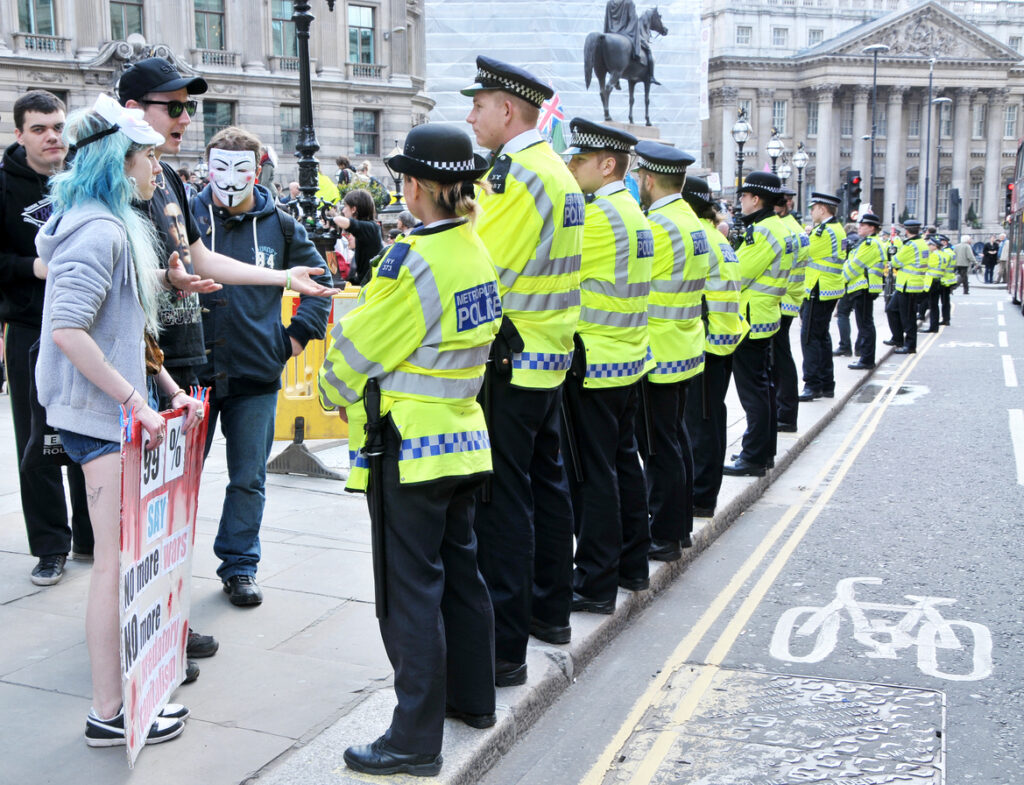Wide-Area Safety Coverage: Why Councils and Local Authorities Trust Radios

Two-way radio systems provide safety coverage that could mean the difference between life and death during emergencies. Health and safety are the biggest concerns for organisations operating in harsh and dangerous environments especially for local councils and authorities.
Two-way radios deliver instant communication unlike mobile phones. Users just need to press the transmit or push-to-talk button to reach everyone on the frequency immediately. This immediate coverage helps teams stay connected even in challenging situations. Plus they won’t fail when regular networks become overwhelmed.
Two-way radio technology has a rich history that spans over 100 years. Let’s take a look at why walkie talkies are the top choice for wide-range safety coverage.
Why Mobile Networks Fail in Council Safety Operations
Mobile phones are everywhere in our daily lives. Yet council safety operations face their biggest problems when they rely only on commercial cellular networks. These limitations become obvious during critical situations that need reliable safety coverage.
Signal Congestion in High-Density Areas
Commercial mobile networks can’t maintain reliable public safety coverage in crowded places. Large public gatherings or emergency situations overwhelm these networks as thousands of users try to access services at once. Mobile network operators share resources among users. Heavy traffic reduces performance for everyone. Emergency responders included.
The root of this congestion lies in cellular infrastructure design limits. Urban centres, stadiums, and convention halls create signal interference that causes dropped connections and slow data transfers. Traditional cellular networks weren’t built to handle extreme demands during emergencies.
Delayed Communication in Emergency Scenarios
Every second matters in emergency situations. Communication delays can lead to confusion, panic, and loss of life. Network congestion during crises stymies emergency personnel efforts. This wastes valuable time and resources that could make the emergency worse.
Real-world implications paint a stark picture. Extended communication times hurt accessibility, patient triage, and critical decision-making. Language barriers increase despatch times for basic life support teams by 33% and acute life support teams by 43%. Longer communication times link directly to higher mortality rates, especially among elderly people.
Communication delays during emergencies also lead to:
- Widespread panic and misinformation as rumours fill the void
- Coordination problems that hurt emergency response efforts
- Economic losses from business disruptions and infrastructure damage
- Public trust erosion in emergency management systems
- Lack of Group Broadcast Capabilities
Commercial mobile networks’ quickest way to handle group communication falls short for council safety operations. Traditional cellular systems use point-to-point connections that need separate channels for each recipient. This creates problems during emergencies that need coordinated group responses.
A content server delivering information through point-to-point connections must set up separate links for each recipient. This system breaks down as recipient numbers grow. A server handling 1,000 parallel connections needs over 2.5 hours to send one message to 50,000 users – an impossible timeline during emergencies.
Public safety incidents rarely follow a predictable pattern in location or timing. Rescue teams must coordinate their efforts through group calls to share information with multiple recipients at once. Mobile networks without dedicated multicast capabilities struggle to provide essential safety shield coverage over wide areas.
Purpose-built radio systems highlight these shortcomings clearly. Commercial mobile networks focus on broad consumer coverage but lack specialised public safety features. They don’t offer the same priority and preemption capabilities as dedicated public safety networks. This creates vulnerabilities during emergencies or high-demand periods.
How Two-Way Radios Enable Real-Time Public Safety Coverage
Two-way radio systems give councils vital advantages that mobile networks can’t match for safety operations. These purpose-built communication solutions deliver reliable performance right when teams need it most, without congestion or delays.
Push-to-Talk for Instant Group Alerts
Push-to-talk (PTT) technology is the life-blood of effective public safety coverage. PTT technology lets users communicate instantly with a single button press, unlike mobile phones that need dialling and connection time. The half-duplex system transmits in one direction at a time, which stops team members from talking over each other and keeps messages clear.
Safety personnel can broadcast important information to entire teams at once, instead of making multiple phone calls to different departments. This feature becomes even more valuable when you have research showing that over 70% of organisations list group communication as a vital requirement for their systems.
Real emergency scenarios show these practical benefits clearly. Picture council workers evacuating a public area quickly because of a safety threat. A single PTT alert reaches everyone right away, without the delays of individual calls or texts. This speed can help emergency teams respond faster and save lives.
Channel Segmentation for Departmental Coordination
Council operations work better when different departments communicate efficiently without extra noise. Channel segmentation lets teams separate their communications by function, location, or department type.
Multi-channel two-way radio systems let councils set up a detailed communication framework where:
- Transport managers monitor vehicle movements
- Maintenance teams coordinate repairs
- Security personnel address safety concerns
- CCTV operators maintain surveillance
- Emergency services coordinate responses
Teams receive only relevant information, which eliminates distracting chatter. Maintenance crews don’t hear transport logistics talks, but supervisors can monitor all channels to keep oversight.
Built-in Safety Features That Protect Council Workers
Modern two-way radio systems, like Kenwood NX-1000 range, keep council workers safe through smart safety features. These built-in capabilities give vital safety coverage to staff who work in dangerous places or by themselves.
Lone Worker Mode for Isolated Staff
Council employees often work by themselves in remote spots or during night shifts, which puts them at risk. Lone Worker mode helps protect them with a smart timer that keeps track of their activity. The radio starts a quiet countdown after a period of no activity – usually set to 30 minutes. Once the timer runs out without any response, the radio sends out a sound alert asking for confirmation.
This system works like an automatic check-in buddy. If the worker doesn’t respond within the set time (usually a 2-minute warning period), the radio sends an emergency alert to supervisors or monitoring teams. This gives peace of mind to workers who are alone and helps councils follow health and safety rules for protecting isolated workers.
You can adjust this feature based on how risky the job is. More dangerous jobs need shorter check-in times, while safer ones can have longer intervals. Lone Worker mode acts like a virtual safety partner that makes sure help arrives quickly if someone stops responding.
Man Down Alerts with Motion Sensors
The most advanced safety feature in today’s two-way radios is the Man Down system, which uses smart motion sensors to spot dangerous situations. These sensors watch how the radio moves and tilts, sending alerts if something seems wrong.
The system kicks in when the radio:
- Tilts past a certain angle
- Stays still for too long
- Shows movement that looks like a fall
The radio gives a warning first to avoid false alarms. Without a response, it sends out an emergency signal with the user’s details and often turns on an “open mic” so responders can hear what’s happening without the user touching any buttons. This helps workers who can’t call for help themselves.
This feature needs mid to high-end radios with special option boards – small tilt switches that detect the device’s angle and movement. While you won’t find it in entry level models, it’s worth the investment for councils that want to give their staff the best protection.
GPS Tracking for Safety Coverage Area
Location tracking adds another layer of protection for council workers. Radios with GPS send exact location updates that let supervisors see where their staff are in large patrol areas. Teams stay in their assigned zones and help can find them quickly in emergencies.
The system alerts supervisors if workers cross these lines. This helps:
- Keep people out of dangerous areas
- Make sure staff stick to their patrol zones
- Watch over security teams at night
GPS tracking helps supervisors plan better patrol routes that cover everything without wasting time. Location data also works with emergency alerts so response teams know exactly where to go, saving precious minutes when time matters most.
Emergency Button in Walkie Talkie
The emergency button stands out as the most straightforward safety feature, giving workers quick access to help when they need it most. The orange button sits on top of the radio where workers can find it even in poor light.
Pressing the emergency button sets off several automatic actions
- Sends an alert with the worker’s ID
- Can start tracking the worker’s location
- Might turn on “open mic” to hear what’s happening
Emergency signals get priority over regular radio chatter. This means faster response times and better teamwork during emergencies. For council workers facing sudden dangers, from physical threats to environmental hazards, this quick link to help gives them essential protection.
These four built-in safety features make two-way radio systems much more than just communication tools. They create a safety net that protects council workers in even the toughest situations.
Ensuring Safety Coverage in Harsh Environments
Council communication systems face tough challenges in harsh environments. Standard devices tend to fail at the worst possible moments, especially during freezing temperatures and heavy rain.
Radio manufacturers have solved these problems by creating tough devices that can handle extreme conditions.
Modern outdoor radios are built to last with IP65 or higher ratings. These ratings show the radio’s ability to block out dust completely while resisting water jets from any angle. Some advanced models meet IP68/IP69K standards and will keep working even after being submerged or hit with high-pressure water jets.
Temperature tolerance plays a vital role in making these radios resilient. Professional radio systems work reliably in temperatures from -30°C to +65°C. Council workers can stay connected through winter storms and summer heat waves.
Physical durability ensures these radios keep working after drops and impacts. The devices feature reinforced corners, toughened glass, and impact-resistant materials that help them survive falls from great heights. Council personnel working in demanding environments need this robust construction.
Radio communications in mountainous areas face unique challenges because hills and valleys affect signal strength. Radio users who understand how landscape shapes coverage can work around these limitations. A small increase in elevation can substantially improve signal reach, which helps emergency messages get through difficult areas.
Two-way radios keep working in isolated locations where other technologies give up. Radio systems maintain reliability whatever the weather, unlike satellite communications that don’t deal very well with atmospheric conditions or magnetic interference near the poles.
Wrapping Up Safety Coverage
More councils now see weather-resistant communication as a basic safety requirement. Modern radio equipment stands up to challenging conditions, from snowstorms to wildfires, and gives users uninterrupted connections even in nature’s worst moments.
Purpose-built communication tools that work when regular devices fail are essential to maintain consistent safety coverage in harsh environments. Contact us today and we’ll set you up with the best radio comms for your team that ensures wide-range safety coverage.






